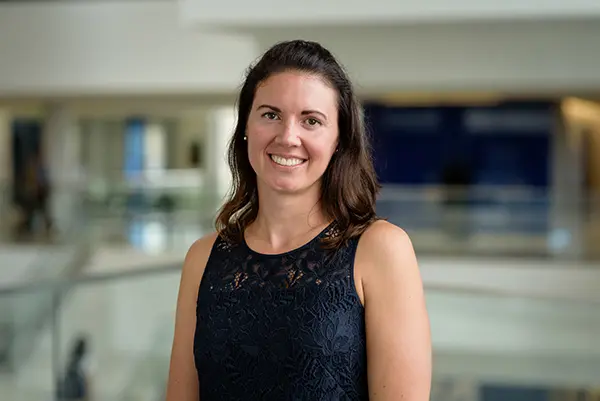Asst. Prof. Sabrina Noel: More Studies of Diverse Groups Needed
 Image by Adrien Bisson
Image by Adrien Bisson
09/16/2021
By Katharine Webster
Many people think of osteoporosis as a disease that primarily affects non-Hispanic white women, thinning their bones to fragility and causing painful fractures of the spine, hips and wrists as they age.
The reality is different – and shows how much researchers don’t yet know about who is affected and why, says Nutrition Asst. Prof. Sabrina Noel in a new review for The Journal of Bone and Mineral Research.
Different studies in the United States have reached different conclusions about the prevalence of osteoporosis among Hispanic and Asian American women. Some studies have found the same prevalence as for non-Hispanic white women, while others have found higher or lower prevalence, she says.
These inconsistencies may be partly explained by researchers’ tendency to treat Asian Americans as a single group and to do the same with all Latinos or Hispanics, without looking at their national origins, Noel and two co-authors argue in the review article. And there’s not enough research on men in any group, she says.
“There are many gaps in the field that we need to address,” Noel says. “We are not telling the full story because there is a lot that we just don’t know.”
Noel was funded in 2015 by a five-year, K01 Research Scientist Development Award from the National Institutes of Health (NIH) to specialize in bone health research with a focus on diet and preventive strategies. She was invited to do the review to figure out what is known about bone health among different racial and ethnic groups living in the United States, identify gaps, and provide direction for future research.
Noel, along with Michelly Santos, project manager for community research at UML’s Center for Population Health, and Nicole C. Wright, an associate professor of public health at the University of Alabama at Birmingham, reviewed research on bone density, fractures, osteoporosis, and screening and treatment for the disease.
They found inequities in prevention, treatment and outcomes. For example, non-Hispanic Blacks experience fewer fractures than other groups, Noel says – but their fractures are far more likely to result in severe disability.
Focused Research
Noel’s research with other faculty in the Department of Biomedical and Nutritional Sciences has yielded new insights into disparities in osteoporosis and bone health, one of the reasons she was invited to write the article.
 Image by UAB
Image by UAB
Under the NIH grant and other funding, Noel has been helping to analyze osteoporosis data from the Boston Puerto Rican Osteoporosis Study, conduct focus groups on osteoporosis knowledge, attitudes and beliefs among Hispanics in Lawrence, Massachusetts, and design an educational intervention.
The UML researchers have found that women of Puerto Rican origin have similar prevalence of osteoporosis as non-Hispanic white and Mexican American women, the largest and most widely studied Hispanic origin group in the U.S., but Puerto Rican men have double or triple the prevalence of osteoporosis compared to men in the other groups.
That points to the need for more research that examines differences among individual Hispanic and Asian origin groups, Noel says. For example, differing biological, lifestyle and environmental factors may affect the bone health of Indian, Chinese, Japanese and Southeast Asian Americans.
Osteoporosis Education
Noel’s focus group research in Lawrence, where many participants are of Dominican origin, found that nearly all the adults thought they knew what osteoporosis was. But when asked to describe the disease, they mostly talked about painful joints and bone deformities that are typical of arthritis, not osteoporosis.
“Participants also reported that most of their health care appointments focused on managing existing conditions and medications instead of prevention of chronic conditions,” she says.
Noel is developing a pilot educational intervention and will study whether it is effective.
The city, as part of an attempt to close the digital divide, is providing electronic tablets to some residents. The tablets will come pre-loaded with various resources, including videos and a fotonovela – a photo comic – on osteoporosis and ways to prevent it.




